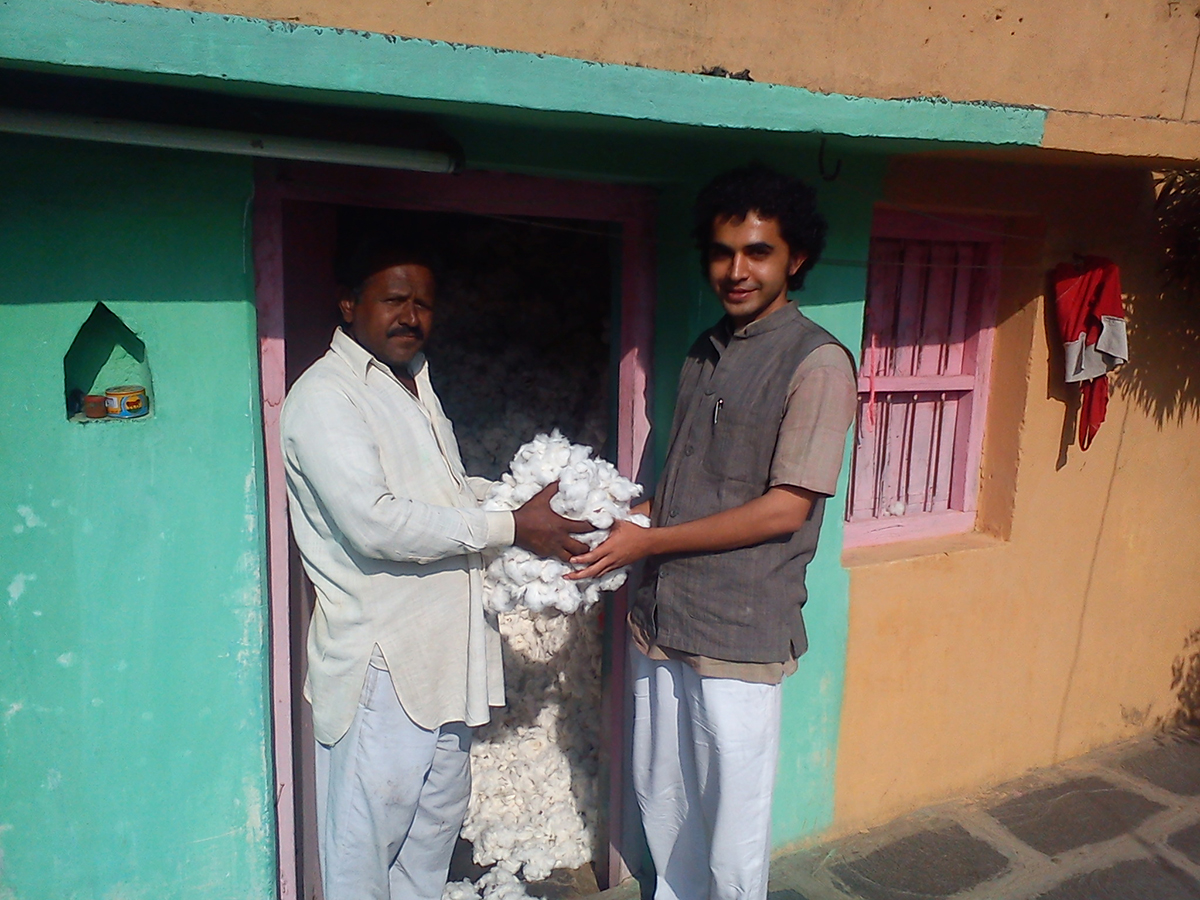Indian cotton supply chain benefits traders, hurts farmers
By Krisy Gashler

In the Vidarbha region of India, 3.4 million people spend most of their lives farming cotton and living in poverty.
One of the problems these farmers face is traders who share the pain when prices drop but share very little of the gain with the farmers when prices rise, say Miguel Gómez, associate professor at the Charles H. Dyson School of Applied Economics and Management, and Aditya Shrinivas, MPA ’13, a doctoral student at the University of Illinois at Urbana-Champaign. Lack of pricing information disadvantages farmers as they bargain with middlemen who game the market, according to the researchers. Gómez and Shrinivas argue policymakers can shape a better functioning market by leveling the information playing field.
That conclusion is part of the researchers’ new study on price transmission asymmetries along the cotton supply chain in Vidarbha in the journal Agricultural Economics, available online now and in print in July.
The Vidarbha region has become infamous internationally for its farmer suicides, especially since the early 2000s. During this period of agrarian distress, the state government eliminated its expensive price-control scheme for cotton. The deregulation of cotton prices was intended to eliminate a bankrupt government program while enabling markets to work more efficiently, Gómez said. But it has had unintended consequences for farmers.
“Ideally you would expect that changes in international prices are transmitted quickly and fairly through all segments of the supply chain: to exporters, to traders, to farmers,” he said. “But we found that the benefits of having functioning markets do not trickle down to the farmer.”
In 2011, Shrinivas spent seven months in Vidarbha interviewing farmers and traders, visiting ginning mills and government offices, and gathering data on cotton prices through the entire supply chain. His work was enabled by an internship through the Tata-Cornell Agriculture and Nutrition Initiative.
Likely because of the difficulty of obtaining consistent long-term data on cotton prices at different levels of the supply chain, this is the first study to examine how fluctuations in cotton prices are transmitted to farmers, the researchers said.

“I was surprised to see the level of sophistication of cotton traders in these small towns in India,” Shrinivas said. “They knew exactly the price situation in China; they knew the projected cotton production in Australia; they knew the New York futures. They were extremely well informed on the downstream markets.
“On the other hand, when I spoke to farmers, they said they had no idea why the prices were so volatile,” he said. “And I saw that traders were using this to their advantage.”
Analyzing data from 2002-12, Gómez and Shrinivas found, on average, a farmer selling 50 quintals of raw cotton would earn an additional 2,300 rupees (approximately $35) if domestic prices increased by 250 rupees per quintal. However, if prices dropped by the same amount, the farmer would lose 3,464 rupees (about $55).
Demonstrating this long-term inequality rigorously and systematically should help influence Indian policymakers and donor groups affect changes that will help farmers, Gómez said.
“One thing that the policymakers can do, clearly, is to eliminate the information asymmetries,” Gómez said. “They need to invest in an effective system so that market information gets to the farmer. Because this information, if well managed by farmers, farmer cooperatives and producer groups, may empower them to be in a better position to negotiate with the traders.”
Another disadvantage Vidarbha cotton farmers face may be the result of the “oligopsony structure of market yards — many sellers and few buyers,” the researchers conclude.
There are farmer cooperatives in other regions of India, but not in Vidarbha, Shrinivas said, and that is also likely diminishing farmers’ negotiating power with traders.
Krisy Gashler is a freelance writer for the College of Agriculture and Life Sciences.
Media Contact
Get Cornell news delivered right to your inbox.
Subscribe